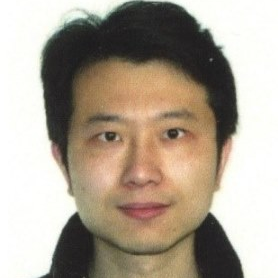Advanced Semiconductor Materials and Films: Properties and Applications
A special issue of Coatings (ISSN 2079-6412). This special issue belongs to the section "Surface Engineering for Energy Harvesting, Conversion, and Storage".
Deadline for manuscript submissions: 31 August 2024 | Viewed by 8748
Special Issue Editors
Interests: semiconductor materials; nanostructures; bandgap modulation; photonics; optoelectronics
Interests: metasurface; plasmonics; nonlinear nanophotonics
Special Issue Information
Dear Colleagues,
One-dimensional (1D) semiconductor nanostructures, 2D materials, and thin films are of particular interest with respect to their potential applications in highly integrated devices and systems. Especially, on-nanostructure bandgap modulation, thin film heterostructures, artificial optical systems (fabricated via CVD, MOCVD, MBE, and ALD), solution-based process, and sputtering, etc., may provide material platforms for potential applications in photovoltaics, solid-state lighting, as well as highly integrated photonic and optoelectronic devices.
This Special Issue covers several topics with regard to the preparation, optoelectronic, nanophotonic, characterization, and applications of semiconductor materials and their films in science and technologies. Authors are invited to submit original research articles, critical review articles, or short communications focused on, but not limited to, these topics:
- On-structure synthesis of 1D or 2D materials with radially or axially modulated compositions along a single structure;
- Innovative technical for the realize the bandgap engineering on a single nanowire or 2D materials;
- Recent advances in thin films and optoelectronic applications;
- Fabrication and physical properties of semiconductor materials;
- Semiconductor-metal interactions or light-mater interactions.
Prof. Dr. Pengfei Guo
Prof. Dr. Shaoding Liu
Prof. Dr. Chaoping Liu
Guest Editors
Manuscript Submission Information
Manuscripts should be submitted online at www.mdpi.com by registering and logging in to this website. Once you are registered, click here to go to the submission form. Manuscripts can be submitted until the deadline. All submissions that pass pre-check are peer-reviewed. Accepted papers will be published continuously in the journal (as soon as accepted) and will be listed together on the special issue website. Research articles, review articles as well as short communications are invited. For planned papers, a title and short abstract (about 100 words) can be sent to the Editorial Office for announcement on this website.
Submitted manuscripts should not have been published previously, nor be under consideration for publication elsewhere (except conference proceedings papers). All manuscripts are thoroughly refereed through a single-blind peer-review process. A guide for authors and other relevant information for submission of manuscripts is available on the Instructions for Authors page. Coatings is an international peer-reviewed open access monthly journal published by MDPI.
Please visit the Instructions for Authors page before submitting a manuscript. The Article Processing Charge (APC) for publication in this open access journal is 2600 CHF (Swiss Francs). Submitted papers should be well formatted and use good English. Authors may use MDPI's English editing service prior to publication or during author revisions.
Keywords
- semiconductor nanostructures
- photodetectors
- nanolasers
- nonlinear nanophotonics
- metasurface
- thin films and heterostructures
- optoelectronic devices







